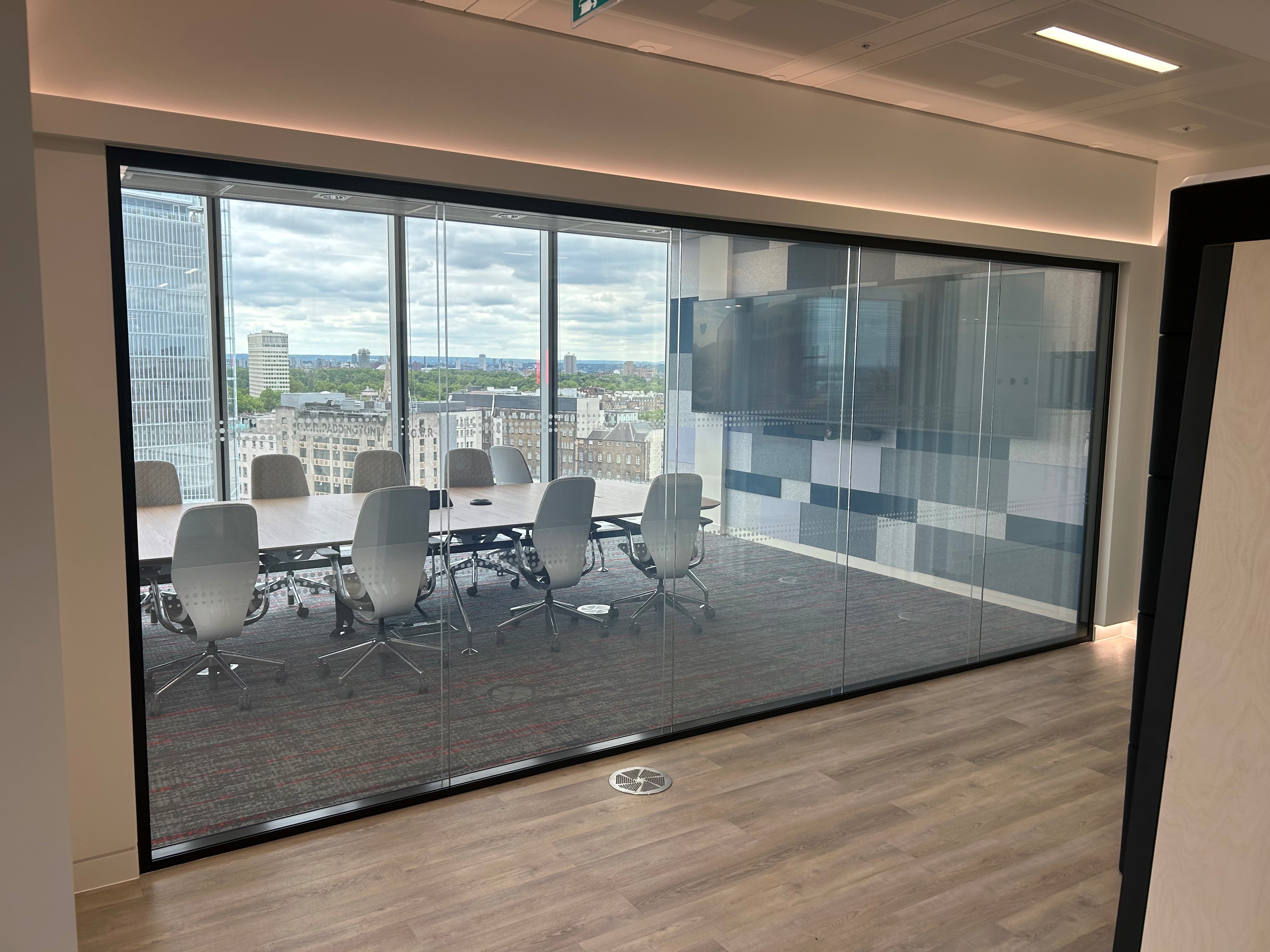
One of the many considerations required when specifying glazed partitions is whether to opt for toughened glass or acoustic glass.
It's a question we're frequently asked, so we've explained the key differences between the two in this blog, with the help of our Director, Oliver Davies.
Toughened Glass
While toughened glass has a good acoustic rating compared to standard glazing, toughened, or tempered glass as it's also known, is not specifically designed for noise reduction.
The main advantage of toughened glass is the strength of the glazing, as the name suggests. This comes from the glass being thermally treated to provide an increased resistance and to ensure the glass breaks safely to comply with BS 6206.
Toughened glass is typically used on framed and frameless doors in the commercial sector and will always be required in scenarios where handles need to be set within the glass.
Acoustic Glass
Acoustic glass, meanwhile, is designed with noise reduction in mind.
This glass has a multi-layered laminated construction using PVB interlayers which absorbs and dissipates sound waves effectively, and significantly reduces noise transmission.
The interlayers used for acoustic glass are between 0.8mm and 1.5mm thick.
Acoustic Performance
Now we've explained the difference between the two, it's time to look at the acoustic performance.
Our 12mm toughened glass systems typically achieve 34dB RW, while our 12.8mm acoustic glass systems achieve up to 39dB RW.
If you'd like to discuss toughened, acoustic or glazed partitions in general for your projects, please contact us here.
Related articles

Embodied Carbon in Glazed Partitions



